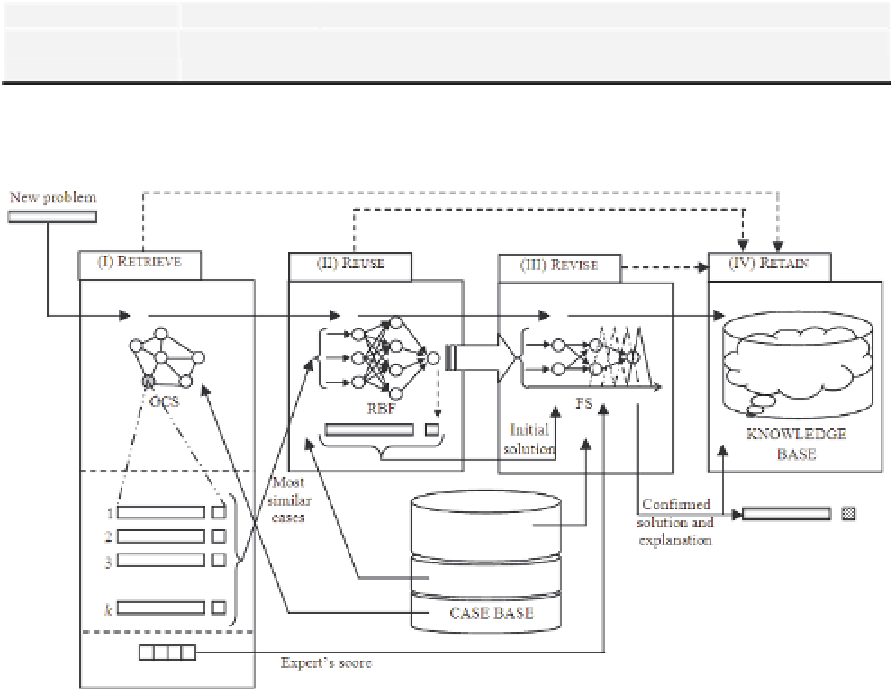Information Technology Reference
In-Depth Information
Attribute
Type
Description
Location
AlphanumericGeographical location of the sensor buoy.
Date
dd-mm-yyyy Date on which the measure was made.
Time
hh-mm-ss
Time on which the measure was made.
Temperature
Numeric
Water temperature (cent. degrees) at different depths.
Oxygen
Numeric
Oxygen concentration (milliliters/liter) at different depths.
PH
Numeric
acid/based scale.
Transmitance
Numeric
Fraction (percentage) of sun light that passes through the
sea-water.
Fluorescence
Numeric
Sea-water fluorescence (percentage) at different depths.
Cloud index
Numeric
Cloud measurement derivate from a geostationary satellite.
Recount of
diatoms
Numeric
Algae concentration (in cell/liter) at different depths.
Pseudo-nitzschia
spp
Numeric
Diatom concentration (in cell/liter) at different depths
causing harmful algae blooms.
Pseudo-nitzschia
spp
(future)
Numeric
Diatom concentration (in cell/liter) to be predicted.
Table 3. Oceanographic parameters and physical characteristics of the water mass
comprising a case in the FSfRT system
Fig. 8. Life cycle of the FSfRT system for oceanographic prediction
In the revision phase, the initial solution proposed by the RBF neural network is modified
according to the responses of the four fuzzy revision subsystems. Each revision subsystem
has been created from the RBF network using neurofuzzy techniques (Jin & Sendhoff, 2003).
For each class of the GCS neural network a vector of four values is maintained (see Figure




Search WWH ::

Custom Search